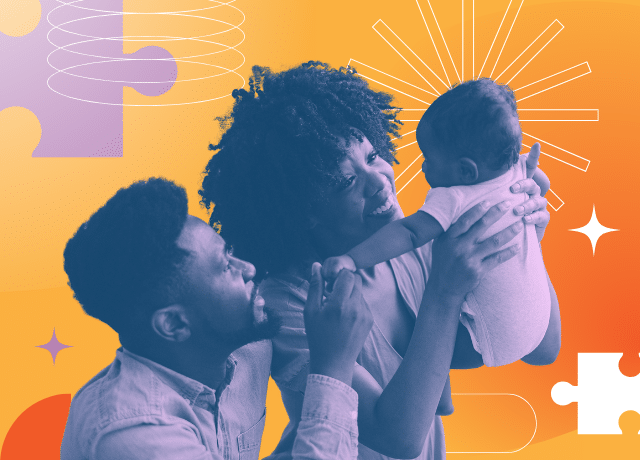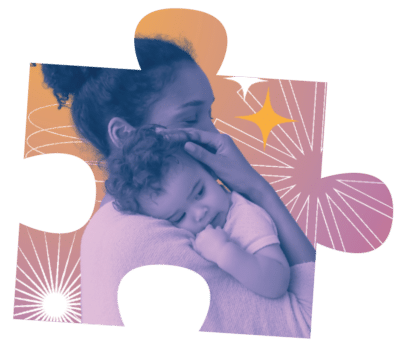Did you know that a child’s self-esteem is already well formed by age 5? Research from the University of Washington shows that young children start forming their sense of self-esteem much earlier than most people think. In early childhood education classrooms, the positive interactions you have with children help shape how they see themselves as they grow.
As teachers and caregivers, your daily interactions with young children matter deeply. When you respond to a baby’s sounds or answer a preschooler’s questions, you show them they’re important. These positive back-and-forth conversations (what we call “conversational turns”) help children feel valued and confident.
The truth is, lots of positive adult-child interactions can boost a child’s self-esteem in powerful ways. But providing those interactions can be a challenge in classrooms with lots of different needs. That’s why we’re here to help!
The Power of Responsive Interactions in Early Childhood
When a baby babbles, they’re inviting you to connect. Just like when toddlers point at something or when a preschooler asks a question. They’re trying to create a connection … with you! These moments are golden opportunities to build their confidence through what experts at Harvard call “serve- and- return” interactions.
What Are Serve and Return Interactions?
We tend to feel like we’re already talking a lot to the children in our care. And we are! But are we talking with them or to them? Think of serve and return exchanges like a game of tennis. The child “serves” by making a sound, gesture, or facial expression. You “return” by responding in a meaningful way. Or vice versa — you start the exchange and the child responds. This back-and-forth lays the foundation for healthy self-esteem and confident learning.
For example, when a baby coos and you smile back saying, “Oh, you’re telling me a story!” you’re telling that baby that their attempts to communicate matter. When a toddler points to a bird and you say, “Yes! That’s a blue jay. It has such beautiful feathers,” you show them their interests are worth your attention.
Children who experience lots of positive responsive interactions develop a stronger sense of self-worth. They learn that their actions have an impact on others. This builds confidence in their ability to navigate the world around them.
5 Practical Tips for Building Children’s Confidence in the Classroom
Tip 1: Get Down on Their Level
When it comes to building confidence, quality and quantity both matter. Start by making eye contact and getting down to the child’s level. This simple action shows respect and genuine interest. Use their name often during these exchanges. Hearing their name in positive contexts helps children develop a strong sense of identity.
For example, try saying, “Olivia, I notice you built your tower very tall today!” Do you see how that’s different from saying something like, “Good job!”? This personal connection makes the interaction more meaningful and confidence-building.
Tip 2: Use Language That Builds Up
Focus on specific praise that highlights effort rather than results. Say, “You worked really hard on that puzzle!” It’s a great alternative to “You’re so smart!” or “Good job!”
Phrases that might accidentally decrease confidence, like “Don’t be shy” or “That was so easy!” may make it difficult to cope with challenges. Life can be difficult, even for children. Acknowledge when things are difficult and praise them for persevering: “Meeting new people can feel scary sometimes.” or “You figured that out quickly!”
Tip 3: Support Children’s Choices and Independence
Confidence grows when children make decisions and see the results. Offer meaningful choices throughout the day: “Would you like to use red paper or blue paper for your art project?”
Respect their decisions, even when they differ from what you might choose. Ask them questions about the decisions they make: “Why did you choose blocks today?” This shows children that their opinions matter and builds their decision-making confidence.
Tip 4: Create a Sense of Belonging
Children feel more confident when they know they belong. Use inclusive language that welcomes everyone.
Respond to children in their home language when possible or learn a few key phrases. The learning materials and wall decor in a classroom matter too! Children respond well when they can see themselves in pictures and books. These practices help all children feel valued and represented.
Make a point to connect with each child individually every day. A personal greeting, a specific comment about something they did, or a question about their interests can make a powerful difference.
 Tip 5: Support Growth Through Challenges
Tip 5: Support Growth Through Challenges
Build confidence by offering challenges that stretch children’s abilities — but not so much that they feel overwhelmed. This “just right” challenge zone is where confidence grows strongest.
When a child struggles, resist the urge to solve the problem immediately. Instead, offer just enough support to help them succeed. Struggling doesn’t have to be a bad thing. It can always be an opportunity for more conversational turns.
And remember to celebrate the process, not just the outcome: “You kept trying different ways to build that tower until you found one that worked!” This teaches children that being consistent and determined matters and that mistakes help us learn.
When children feel your support during both easy and hard times, they feel safe. This helps them learn to bounce back from problems and build lasting confidence.
Overcoming Common Barriers
Even with the best intentions, incorporating any positive changes into a busy classroom may be challenging!
Not all children communicate in the same way. Some might be naturally talkative while others are quieter observers. Some may have speech delays or use different communication methods. That’s ok!
When we try to respond to any and all communication attempts, we’re making a positive difference. Even if the child isn’t using words we can understand yet.
In a classroom full of active children with different needs, finding time for meaningful one-on-one conversations can feel impossible. The good news? You don’t need to add anything new to your schedule.
Transform routine moments into confidence-building opportunities. Diaper changes, meal times, and transitions between activities are perfect for short but meaningful exchanges. Even 30 seconds of focused attention can make a difference.
Building Confident Learners Together
Every positive adult-child interaction helps build a child’s confidence. These small moments add up to big impacts on their self-esteem. Start with just one tip today and watch how it transforms your classroom interactions.
Want more ideas? Download our quick tip sheet: “Building Confidence Through Interactions” — it’s free! Together, we can nurture children who believe in themselves.





 Tip 5: Support Growth Through Challenges
Tip 5: Support Growth Through Challenges

